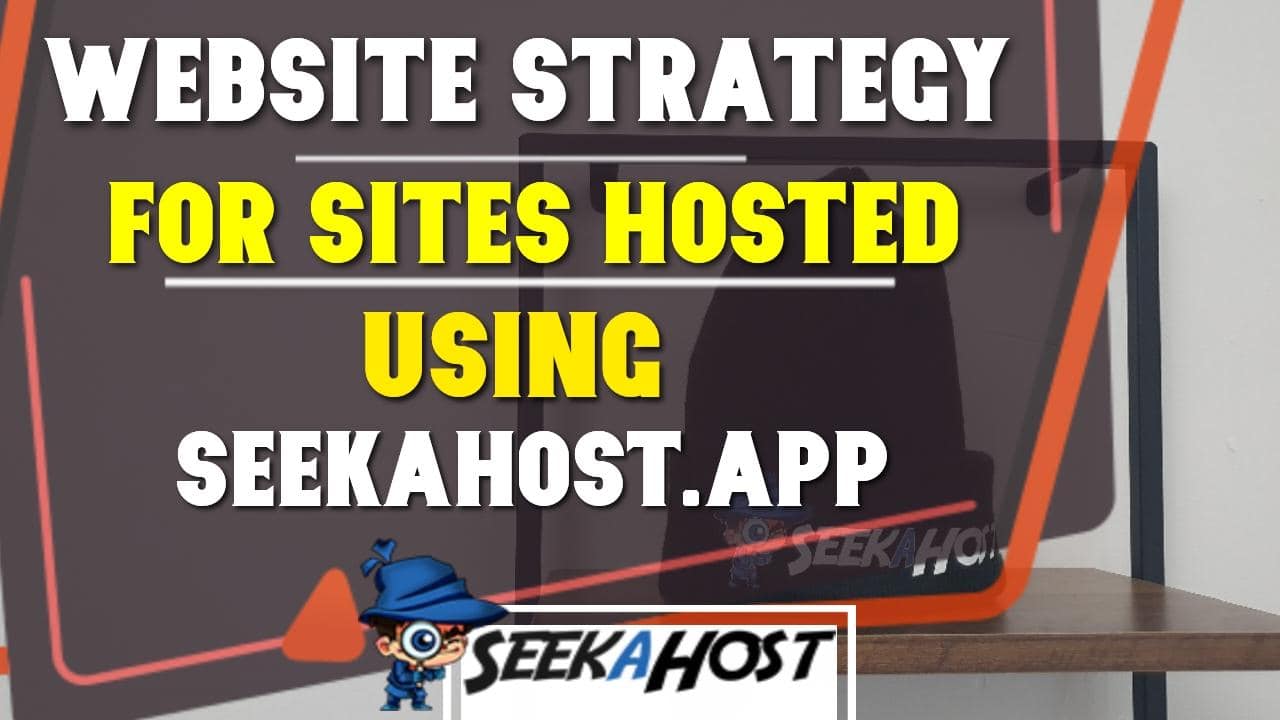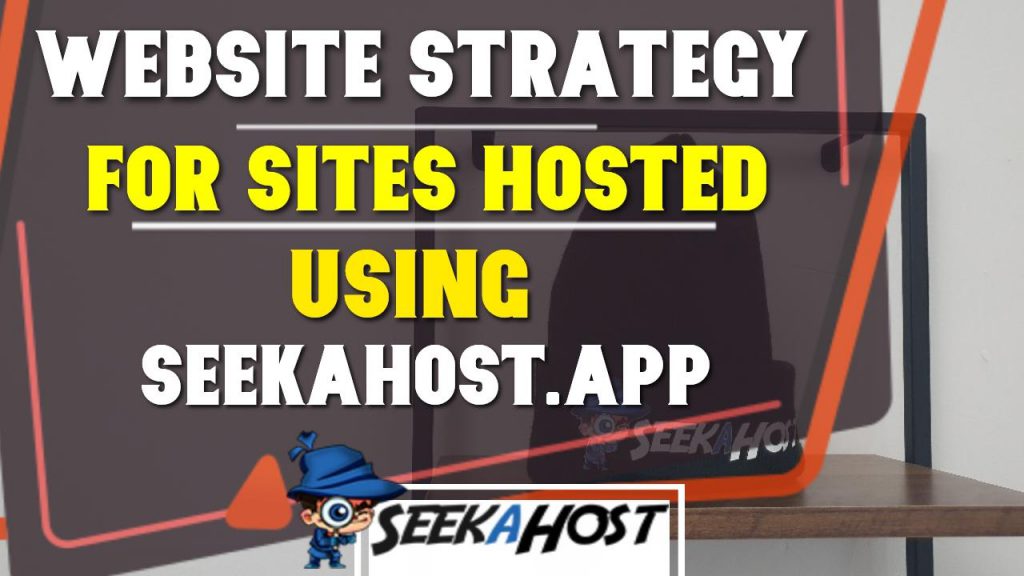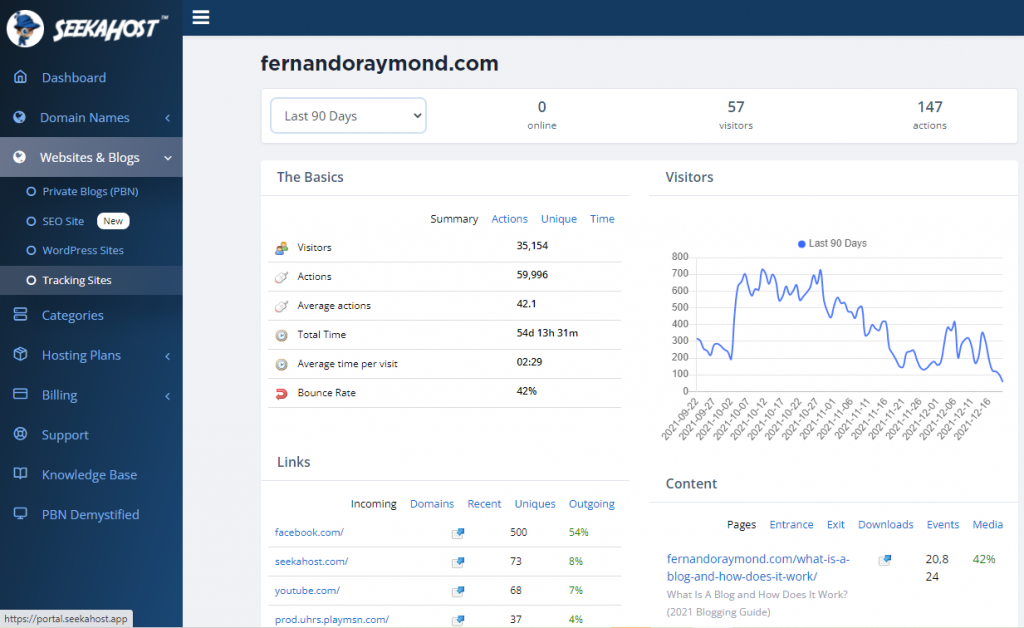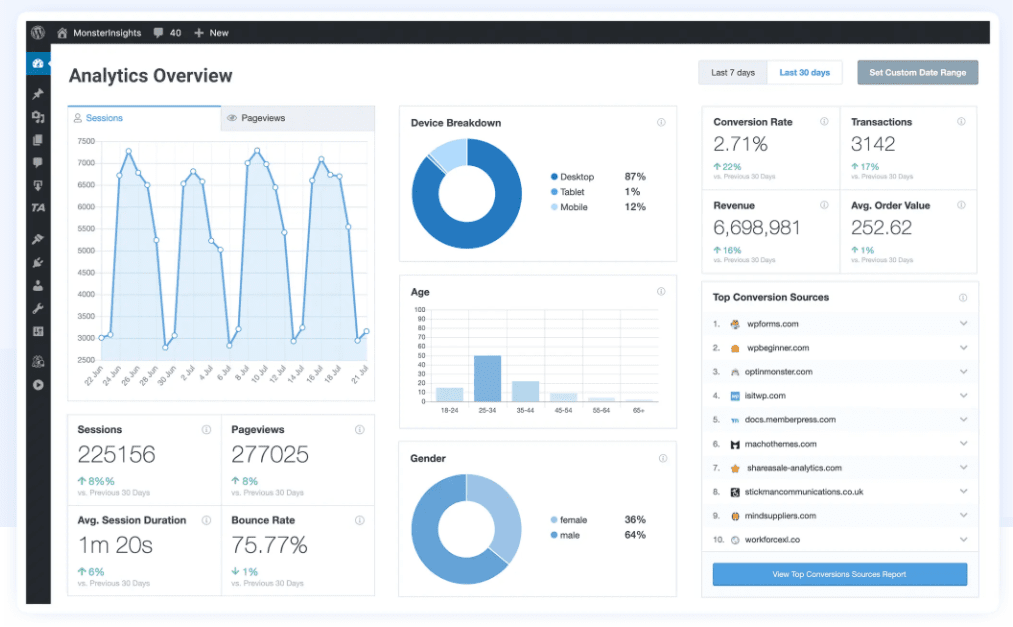
What is a Website Strategy and how to develop a good strategy for your site?
By Fernando | December 20, 2021
Table of Contents
If you are keen to learn what is a good website strategy, I assume you already know what is a website and how does it work. If not, please read the guide I did wrote earlier. It’s important you know how it works and what factors impact the success of a personal or business site.
There are many articles about websites on the web, however, in this guide, we look at how to develop a strategy fast and easy for any small business website design, hosted with SeekaHost.app the World’s best get online web application.

After a year of experimenting and testing what sites work best and how to provide the best blogging platform that also performs better on search engines, we have crafted the ultimate solution.
So, if you have not yet built a site yet using the SeekaHost.app get started by creating an account, so you can be online with a self-hosted WordPress site.
As a business owner, when you decide to invest in a new store, or plant, or an assembly line, you invest a lot of time in planning.
You weigh the various factors at play and plan accordingly. The decision is never because you had a hunch. There is adequate research and SWOT analysis. If needed, you bring in experts and consultants to give an opinion.
Why should a website be any different?
It requires as much strategy and thought as any other business process. The modern-day rise of the digital economy makes a website the most important aspect to pay attention to.
Think about Amazon, one of the world’s most successful websites and its content presentation and web marketing strategy has led to its a success.
What is a website strategy?
We define strategy as a plan of action for achieving an end goal.
It differs from a tactic in that strategy is long term, whereas tactic is short-term adjustments to the strategic plan.
Business strategies usually involve fundamental questions:
- Where the business is currently and what it wants to achieve in the future?
- Should we change the product line in keeping with changes in technology and preferences?
- How will the business acquire the funds necessary for the change?
- How is the change to be effected (acquisition, organic growth, strategic partnership, etc)?
When the same train of thought is applied to the development of a website, it is called website strategy.
Putting together a domain name with a few web pages is not sufficient. At the most, such a haphazard approach establishes a presence on the web but accomplishes little more.
In the case of a business, the purpose of a website is to generate more revenue, aid in the expansion of sales channels, broadcast information, and receive feedback.
Website strategy begins when you ask yourself:
- How important is the website for the business?
- Why does the business have a website?
- What is its role in your business development plan?
- Who is the audience?
- Will the website SEO be managed by an in-house team, outsourced to an agency, or a mix of both?
- What role would social media play in digital strategy?
How to formulate a website strategy that works?
1. Define the goal
Website strategy begins with defining the role of your site and aligning it with the main business development strategy.
Is it an online store or hybrid model that works alongside the physical business or an informational website?
You need to develop long and short-term goals for the site.
An example:
In the short term, the site would partner with the physical store and provide an online presence.
In the long term, the website would evolve into a separate e-commerce business that shares the same backend and warehousing with the physical store but has its own branding.
The short-term goal can be further analysed:
- How would the online store function?
- What is the technology to be used?
- Who would be logistics partners?
- How will SEO be managed?
- Who would maintain the site and update product pages?
Of course, there is nothing wrong with buying a domain name for a few dollars and creating a basic website before you have chalked out all of these answers.
But it is advisable not to take the site mainstream, invest in search engine marketing without a detailed plan of action.
If the site does become an overnight success (and that does happen) and crashes under the weight of visitors, its reputation would never recover.
2. Focus on the target audience
Is the site a B2B or B2C platform?
A B2B platform reaches out to other businesses, while a B2C site targets the customers directly. Alibaba is an ideal and most well-known example of a B2B site, while Amazon is the foremost among B2C sites.
Accurate targeting is important. The way in which the site would look and operate depends on the audience.
A B2B site focuses less on aesthetics and is more functional. However, most of them require custom coding and design.
A B2C site is relatively easier to set up with a SaaS platform such as Shopify and WooCommerce.
While the technology is off the shelf, each site needs a unique appeal much like the décor of a store that draws in visitors. Design of navigation, layout and choice of templates are of the highest priority.
Moreover, the marketing tactics differ widely. B2B sites are not as fervently marketed on social media.
Whatever the type of site, the end goal is to attract promising leads. Unless one has a cogent idea of these aspects, a suitable website strategy cannot be configured.
3. Choose correct technology
A website is only as good as the technology stack it employs. The basics are quite simple and can be understood easily.
Essentially, there are two parts to a site – the frontend (which is displayed on a browser) and a backend (that resides on a server).
The frontend is created with the help of HTML, CSS and JavaScript. The backend depends on Python, PHP and databases such as MySQL.
As mentioned above, a variety of vendors provide readymade sites. Many such as Wix and Shopify also provide web hosting.
If, however, you decide to go with WordPress, hosting has to be purchased separately.
Each e-commerce software platform has pros and cons.
If you are setting up an online store, the other popular platforms are:
- WooCommerce (24%) with WordPress
- Squarespace (24%)
- Wix (6%)
- Shopify (3.7%)
- Magento (2.3%)
The biggest factors that affect their popularity are:
- Cost related to design, hosting, maintenance, recurring costs such as SSL.
- Availability of developers. It is quite easy to find a WooCommerce developer because of its popularity. Far less easy to find someone who knows how to make Magento jump through the hoops.
- Ease of customisation is critical. A website needs to have a unique and attractive look. This is the task of a theme. Some vendors have more themes and also allow a greater degree of customisation.
- Availability of plugins that enhance the functionality of a site. Plugins help with analytics, SEO and many other functions, such as cart management, email management and CRM.
4. Learn from analytics:
The fundamental difference between an offline and an online business is that while you are face to face with a potential lead in the former, the latter offers no such recourse.
Selling is always easier face to face than online.
Think of a customer buying a shirt. In a physical store, a shop assistant can pinpoint the type of shirt he is searching for, his budget and then lay out several for him to try on.
If they are too expensive, the assistant can immediately pull out more affordable brands. The customer can explain what type of fit, material, collar, pattern etc he wants.
This is near impossible in an online store. The sales methodology is radically different. You have to surmise the buyer persona from analytics.
Analytics is a broad term that encompasses all the activities that seek to identify and collate user behaviour on a website.
Using Google Analytics and Clicky analytics are the easiest way to track site victors and how they navigate. You can use both from the SeekaHost.app portal.
![]()
Using Clicky analytics which is free for one site, you can track data in a much easy to understand manner.

Google Analytics offers a comprehensive set of data for visitors originating from its search page.

image Source: www.monsterinsights.com
Besides plugins and software, such as KISSmetrics and Mixpanel, can measure various parameters, such as time-on-site tracking, customer journey mapping and campaign tracking.
Analytics are of little use if the data they provide is not accurately interpreted. Experts in digital marketing specialists in this aspect.
5. Monitor design trends
Web design is a dynamic field. It’s not that core HTML changes quickly, but its application is overhauled every few months.
What worked a couple of years ago seems dated at present.
Since customers are drawn in by how a site looks, followed by what it offers, it is crucial that you stay informed about the latest trends.
Modern sites almost without fail have a dynamic design. In a dynamic site, the content changes every time the website is loaded. The customer always finds updated information about a product, e.g. price, discount, specs, availability.
Other trends include the use of white space, bold fonts, asymmetric layouts, 3D animations, image carousels and other enticing features.
6. Don’t overlook mobile optimisation
Last year, more than two-thirds of all web traffic came from mobile devices. Your site must be optimised to work well on a small screen.
The key to this lies in developing a friendly UX. It is difficult to navigate to different pages on a mobile phone. Design the pages to have an infinite scroll where possible.
The buttons must be placed strategically and be large enough to use on a smart device.
The content must be broken into paragraphs since it is tedious to read long passages on a tiny screen. Images must be sharp enough so that the details stand out despite the constraints.
It is vital to incorporate the use of new technologies, such as Google’s Accelerated Mobile Pages framework, to deliver lightweight web pages that are highly optimised for smaller handheld devices.
In a nutshell…
Website strategy develops on a continuum. While there is a desired short- and long-term goal, there is no actual endpoint.
An endpoint would mean that the website is everything it could possibly be. Since it is technology, that is impossible. When you consider how many facelifts sites such as Amazon have been through over the years, it becomes comprehensible.
Work at it every day and little by little your site would mature and reach out to new customers on a consistent basis.


